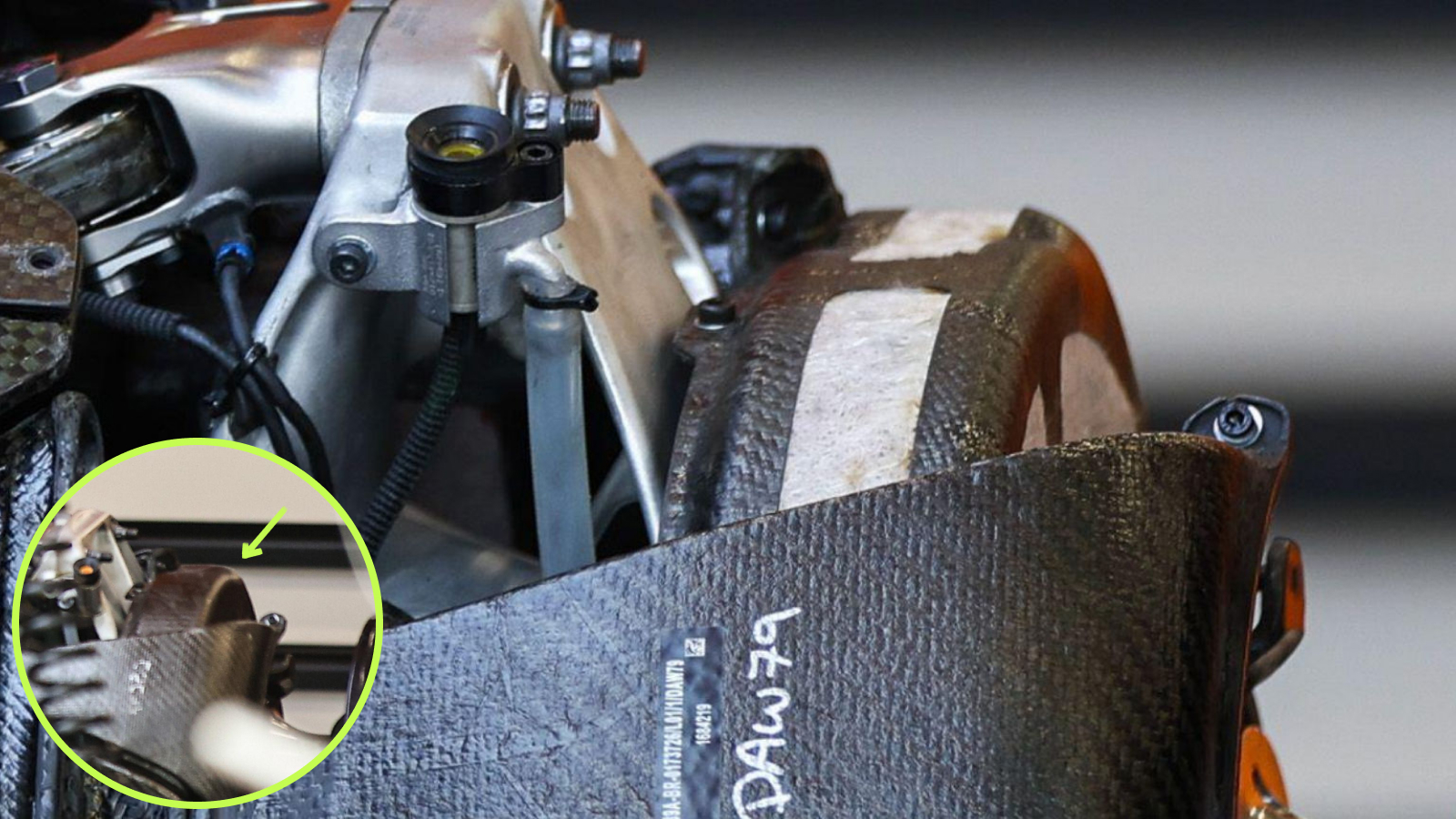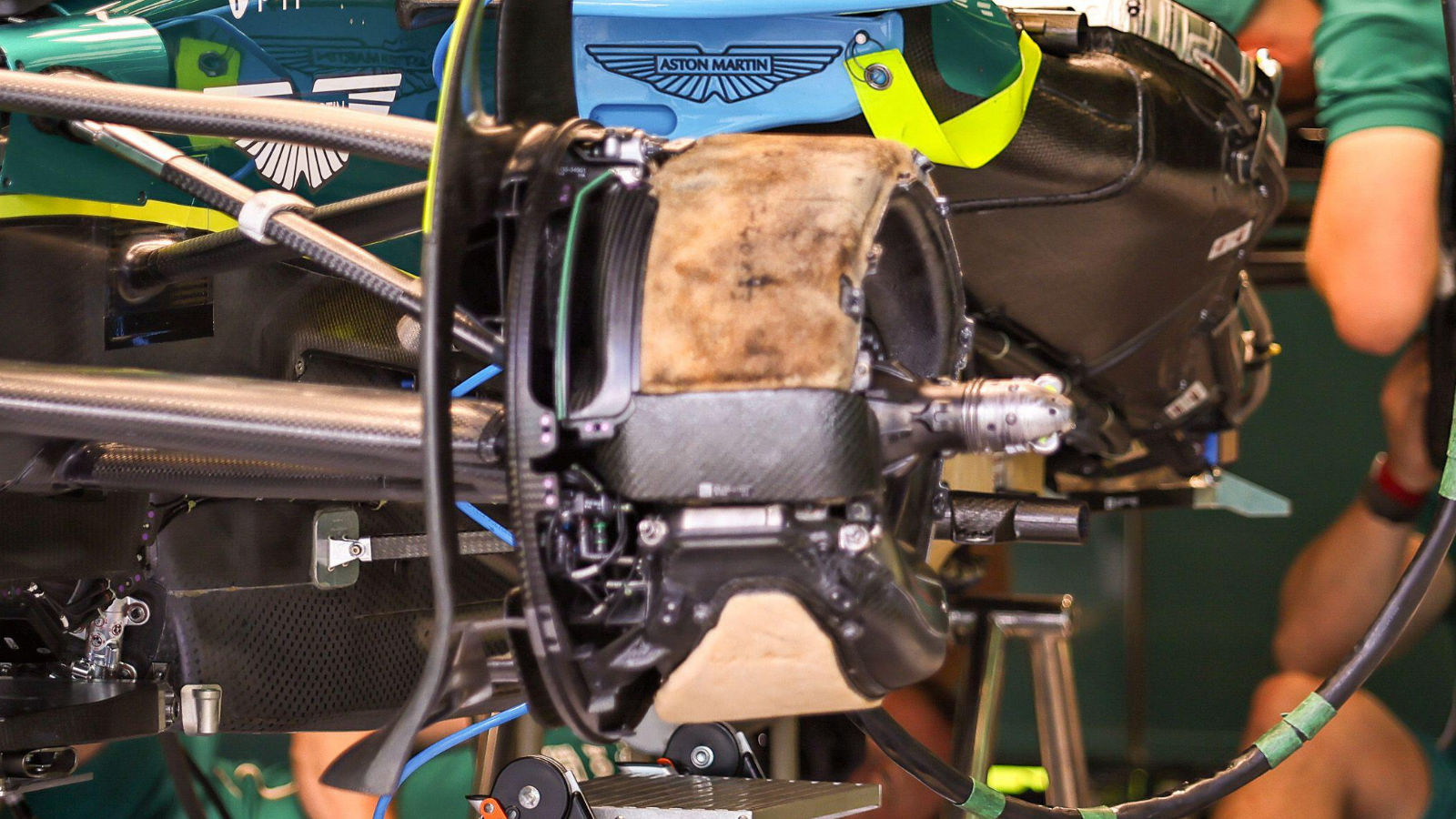The new evidence that shows McLaren’s brake cooling philosophy

McLaren’s exceptional management of this year’s tyres continues to be a topic of discussion, intrigue and speculation, with numerous attempts already made by their rivals to discover how they’re able to regulate rear temperatures so effectively during a race.
Speculation regarding ‘tricks’ that may be being used to help manage temperatures have included the team introducing water into the tyre’s inflation gasses, something which Zak Brown recently poked fun at by labelling his drinks bottle as ‘tire water’ and proudly displayed it as he sat on the pit wall.
McLaren MCL39 accusations evaporateOf course, there’s no smoke without fire and Red Bull, their accusers, appear to have been using precedent to explain how McLaren might have been using this tactic to boost tyre performance, having done something similar when the rules permitted it.
However, when this first came to the FIA’s attention, toward the end of last season, they were satisfied that nothing untoward was being done by McLaren and that the regulations and associated technical directives introduced to prohibit such actions, that had been possible in the past, were robust enough.
Article 10.8.4 of the technical regulations state:
a. Tyres may only be inflated with air or nitrogen. b. Any process the intent of which is to reduce the amount of moisture in the tyre and/or in its inflation gas is forbidden.
Furthermore, at the time Mario Isola, Director of Pirelli, made the tyre manufacturers stance clear:
“The TD came some years ago when there was a discussion on this, there was a discussion also on special gases where it was suggested some teams were changing the gas into the tyre to better control pressure.
“Then someone started to talk about moisture in the tyre, and why we should have more or less. We supply the tyres with dry air inside. We have a dryer connected to our system, and they get all the tyres with dry air, as in the regulations.
“In the technical directive, it’s written that any modification to this is forbidden, and it’s quite clear”.
McLaren MCL39: Hiding in plain sight?So, if it’s not water in the tyres, what are McLaren up to? That’s the question that their rivals are still asking and still trying to find answers for.
Interestingly, it appears that 3rd party thermal images of the brakes on the McLaren, taken during pit stops at the Japanese Grand Prix, revealed that the MCL39’s rear brakes were much cooler than their rivals, suggesting that less heat would also be transferred to the wheel rim and tyres.
This resulted in the FIA taking a much closer look at the MCL39’s rear brake design to ensure it complies with the regulations after the Miami Grand Prix.
The actual confirmation of those additional tests and the scrutiny that followed won’t be available until just before the Emilia Romagna Grand Prix. However, given that there wasn’t immediate clarity issued from the governing body, it’s fairly safe to assume that they were given a full bill of health and the design will remain the same going forward.
Let’s then ask another question, what has changed for McLaren this year when compared with last season?
I already covered the changes that the team had made at the front of the MCL39 a while back but we didn’t have suitable images of the rear brake assembly to cover that effectively at the time.
A decent shot of the assembly from the Saudi Arabian Grand Prix does provide that now though and there’s a clear change in direction from the team for 2025.

As we know, the design of the brake duct relies on multiple nests within the assembly, which use the cool air taken in at the inlet and then distributing it to the affected components.
The heat being generated still has to be managed though and finding a way to control temperature spikes that might occur when they’re in use is critical in managing tyre temperatures too.
In this respect, the most notable change to McLaren’s layout for this season comes to the brake disc fairing, as rather than there being a solid surface (solid brake disc fairing from the MCL38 inset, arrowed) made from carbon fibre surrounding the brake disc, there’s now a number of windows that have been cut into the outer rim and the face of the fairing.
Another, seemingly semi-permeable layer of material sits behind the cutouts, altering how heat might be transferred from the disc when the brakes are applied.
Now, whilst we might rush into thinking this new material between the cutouts is a new solution, it’s not, it’s simply a repurposed one, as teams have been using similar solutions since the beginning of this regulatory cycle.

Taking Aston Martin’s approach, seen in a recent shot taken of the AMR25’s front brake assembly, as an example, we can see that there’s a fresh push being made by the teams to use these different materials to manage how the heat moves around the assembly and as a by-product is transferred into the wheel rim and the tyre.
This will continue to be an area of development for the teams throughout the remainder of the season, with the reward of better tyre management possibly more cost and resource effective than looking for aerodynamic gains, especially given the focus shift towards the 2026 project has already been in full flow for most teams for some time now.
Read next: The McLaren brake advantage theory presented by former Woking staffer
planetf1.com





